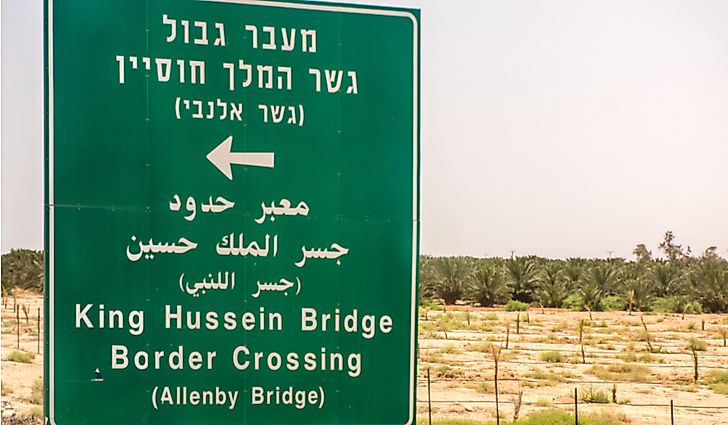Which Countries Border Jordan?

Jordan is a relatively small country in Southwest Asia which occupies an area of approximately 37,138 square miles including the Dead Sea. The country is located between Levantine and the Arabian region of the Middle East, and it is bordered by four countries: Syria, Israel, Iraq, and Saudi Arabia. To the South of Jordan is the Red Sea which is also the only outlet to sea at the Gulf of Aqaba. Jordan’s international borders do not follow definitive terrain features.
Saudi Arabia–Jordan Border
Saudi Arabia shares a border with Jordan. The Hadda Agreement in 1925 first established the border between the two countries. The two countries later reached a bilateral agreement in 1965 realigning the initial delimited boundary set out in the Hadda Agreement. The agreement led to the lengthening of Jordan’s coastline by 4.97 miles which facilitated the expansion of Jordan port infrastructure. The agreement also enabled the two countries to share revenues from petroleum discovered. Saudi Arabia and Jordan are both Sunni Monarchies, with deep family ties. They have remained allies despite Jordan’s reluctance to support Saudi Arabia in the Yemen intervention and the 2017- 2018 Qatar diplomatic crisis.
Israel-Jordan border
The boundary between Israel and Jordan is based on an Armistice agreement established in 1949 between Transjordan and Israel. The agreed boundary represented battle positions held by Israeli and, then, Transjordan forces when the UN-mediated ceasefire came into effect. Jordan and Israel have not always been in peaceful co-existence. The two countries were in a state of war from 1948 to 1994. Although they spent 46 years at war, they maintained contacts and made clandestine mutually beneficial agreements during that period. The Madrid Conference of 1991 marked the beginning of the end of the war, giving birth to bilateral talks between the two countries. These talks manifested into the formal peace treaty signed in October 1994 at the Aqaba-Eilat border crossing, which officially marked the end of the war. The two countries have good political and domestic relations.
Syria-Jordan Border
The border with Syria was established when the Emirate of Transjordan was established in 1921. The border is 233 miles long and runs along the Yarmouk River and then to the east, drawing a straight line through the Syrian Desert and ends at the Syria-Jordan-Iraq border intersection. The two countries were allies up to the late 1960s when Syria supported the Palestinians against Jordan following the rift between the PLO and Jordan. The relations improved following the Yom Kippur War of October 1973 when Jordan reinforced Syrian military effort, only to fall apart in 1977 following Jordan’s support for Egyptian peace initiative. Their relations improved after the first Gulf War with Jordan being a transport route for Syrian businesspeople. They have remained allies, but with a few hitches over the years.
Iraq-Jordan border
Iraq and Jordan were established after WWI through a bilateral agreement between France and Great Britain. Iraq and Jordan maintained close relations due to family ties. These relations collapsed when the royal family in Iraq was overthrown and killed in the Iraqi coup of 1958. The two countries were hostile to each other until the late 1970s when they established a bilateral alliance. Jordan supported Iraq throughout the Iran-Iraq war of 1980-1988. Jordan offered the port of Aqaba and its trucking routes as Iraq’s supply line and in exchange received oil at low prices. They have remained close allies, with Jordan allowing extension of the Iraqi pipeline to the red sea for export of Iraqi crude oil











